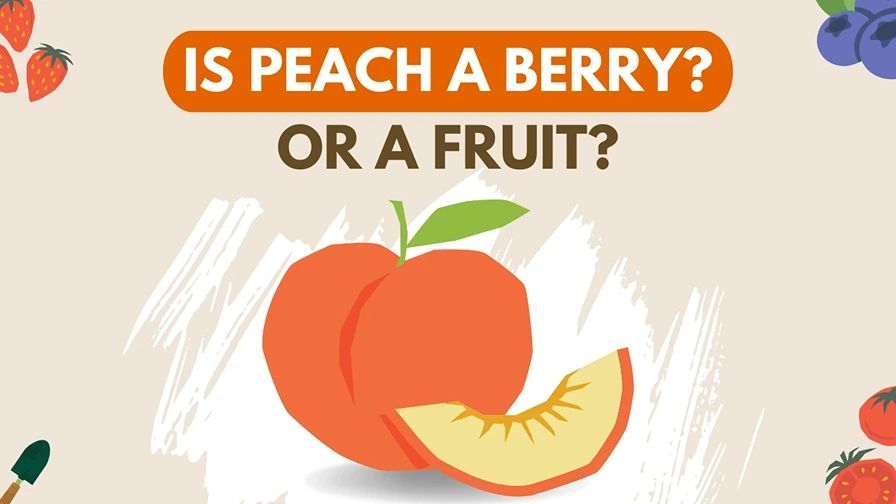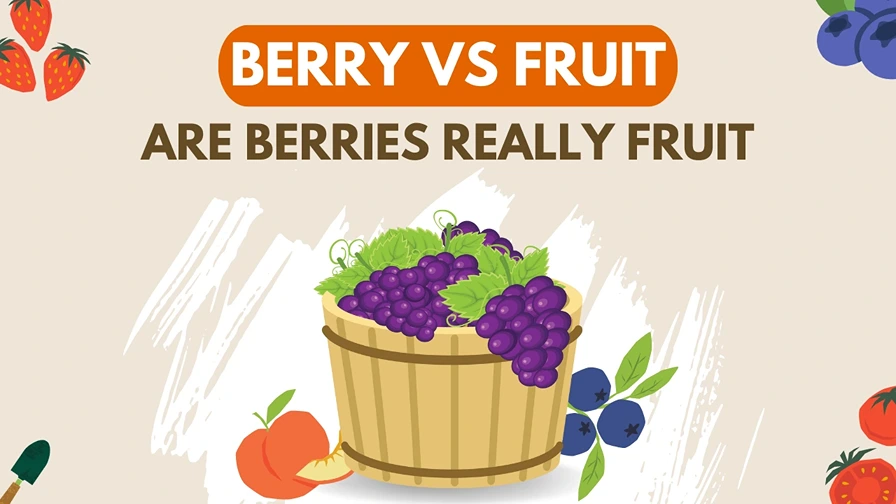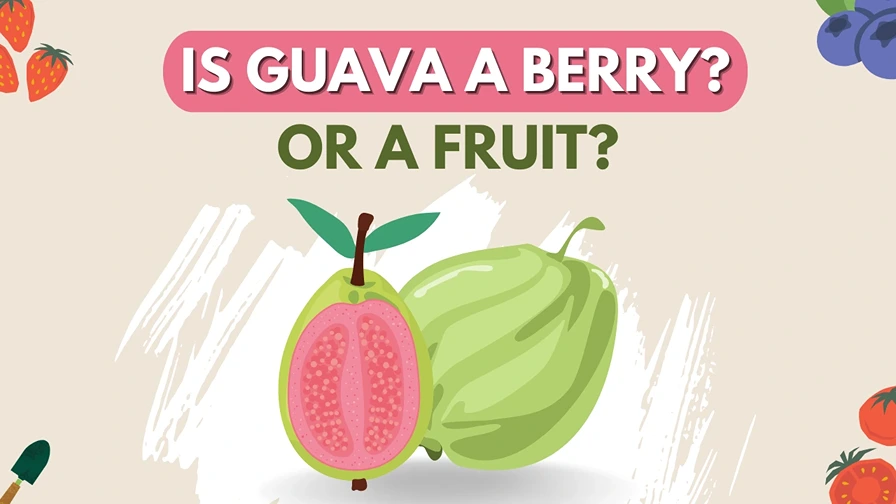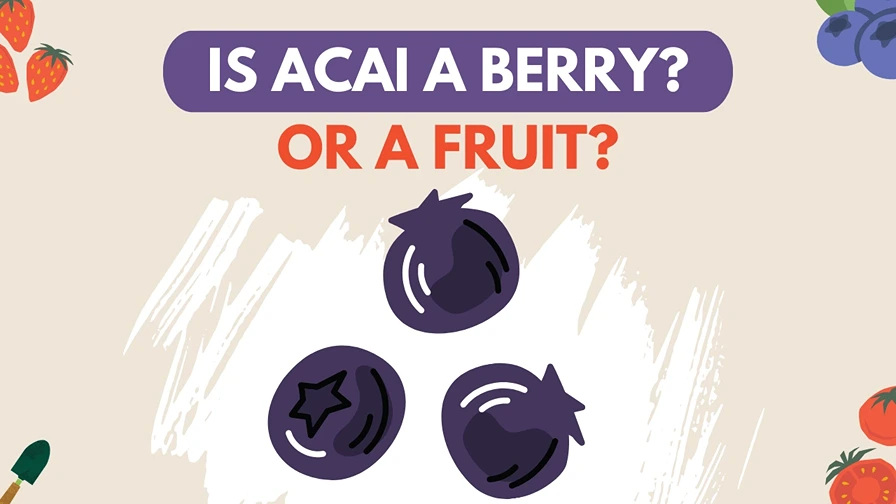Growing enormously in countries like the USA, China, Italy, and Spain, peaches are a summer wonder having rich, soft, and fuzzy pulp and skin. They are known to be members of the Prunus genes. Did you ever take a moment and wonder about whether is peach a berry or a fruit? Are you curious about the classification of peaches?
Perhaps it’s time you should gain this general knowledge.
To give you a precise answer – a Peach is a fruit and specifically a drupe fruit.
But the subject can be a bit perplexing, especially when it comes to botanical classifications.
In this article, we’ll delve into the fascinating world of peaches and unravel the mystery surrounding their categorization. By the end, you’ll clearly understand where peach lies in this berry vs fruit debate.
So, let’s embark on this journey together as we explore the true nature of peaches and shed light on this intriguing topic!
What Is A Peach?
A peach is a delicious and juicy fruit known for its vibrant colors, luscious texture, and sweet flavor. It belongs to the Prunus genus, which encompasses various fruit-bearing trees in the Rosaceae family. They are believed to have originated in China and then they paved their way into North America.
Scientific Classification
Peaches are scientifically classified as drupe, which is a type of fruit characterized by having a fleshy outer layer, a hard pit (also known as a stone or endocarp) in the center, and a seed inside the pit. The fleshy outer layer of the peach is often referred to as the mesocarp. This unique structure gives peaches their distinctive characteristics.
The peach tree, scientifically known as Prunus persica, is native to Northwest China. It is widely cultivated in many parts of the world due to its delicious fruit. Peach trees typically grow to a height of around 6 to 8 meters (20 to 26 feet) and produce beautiful pink flowers in the spring.
These flowers eventually transform into the delectable fruit we know as peaches.
Structure
Peaches come in a variety of shapes, sizes, and colors, ranging from yellow and white to red and purple. Some peaches have fuzzy skin, while others have smooth skin.
The flesh of the peach can be either yellow or white, depending on the variety. Regardless of their appearance, all peaches share a common characteristic: they are incredibly tasty and refreshing!
Nutritional Benefits
Peaches are not only appreciated for their flavor but also for their nutritional value. They are a good source of essential vitamins such as vitamin C, vitamin A, and vitamin E. Peaches also contain dietary fiber, potassium, and antioxidants, which are beneficial for overall health and well-being.
Now we have a clear understanding of what a peach is and its basic characteristics. Let’s delve into the intriguing question of whether peaches should be classified as berries or fruits.
Why Is Peach A Fruit?
Peaches are undeniably classified as fruits, specifically drupes and there are several reasons why they fall into this category. Let’s explore why peaches are considered fruits rather than berries or any other classification:
1. Botanical Definition of Fruits:
From a botanical perspective, fruits are the mature ovaries of flowering plants that contain seeds. They develop from the fertilized ovary after pollination and serve as a means for plants to protect and disperse their seeds.
In the case of peaches, the fleshy outer layer (mesocarp) develops from the ovary, encasing the hard pit (endocarp) that contains the seed. This aligns with the botanical definition of fruits.
2. Drupe Classification:
As mentioned earlier, peaches are classified as drupes. Drupes are a specific type of fruit with a fleshy outer layer, a hard pit, and a seed inside the pit. Examples of other drupes include cherries, plums, and apricots. The presence of a pit containing a seed places peaches in the fruit category, rather than berries.
3. Fruit Characteristics:
Peaches exhibit typical characteristics of fruits. They have a sweet taste, thanks to the natural sugars present in their flesh. They also have a high water content, contributing to their juiciness. These features align with our common understanding of what fruits are like.
4. Culinary and Common Usage:
In everyday language and culinary contexts, peaches are referred to as fruits. They are used in various culinary preparations, such as desserts, jams, and preserves, which are all associated with fruits. Additionally, peaches are commonly found in the fruit section of grocery stores and farmers’ markets, further solidifying their classification as fruits.
Considering these factors, it is evident that peaches are indeed fruits.
They meet the botanical definition of fruits, fall under the drupe classification, possess fruit-like characteristics, and are commonly referred to as fruits in both culinary and everyday contexts.
Now, let’s answer why peaches are not classified as a berry.
Why Peach Is Not A Berry?
Although peaches share certain similarities with berries, they are not classified as such. Here are the reasons why peaches are not considered berries:
1. Botanical Definition of Berries: Botanically speaking, berries are a specific type of fruit that develops from a single ovary and typically has multiple seeds. Berries have a fleshy pericarp (the entire fruit wall) that is soft and often edible. Examples of actual berries include grapes, tomatoes, and blueberries.
In contrast, peaches develop from a single ovary but have a hard pit (endocarp) that houses a single seed, which doesn’t align with the botanical definition of berries.
2. Structural Differences: Berries, such as blueberries or grapes, have a relatively uniform structure throughout, with the seeds distributed evenly within the fleshy fruit.
On the other hand, peaches have a distinct structure with a fleshy outer layer (mesocarp) surrounding a hard pit. This structural dissimilarity sets peaches apart from the characteristics of typical berries.
3. Culinary and Common Usage: In everyday language and culinary contexts, peaches are not commonly referred to as berries. Berries are often associated with small, round fruits that can be consumed directly, while peaches are recognized as larger, oblong-shaped fruits with a distinctive pit in the center. This differentiation in culinary and common usage further emphasizes that peaches are not classified as berries.
Based on these factors, it is clear that peaches do not fit the botanical criteria or the common understanding of what berries are.
Common Fruits That Are Also Berries!
Peaches are not berries, but there are some common fruits that are considered typical fruits but classified as berries.
1. Tomatoes: Tomatoes, scientifically classified as Solanum lycopersicum, are one of the most widely consumed fruits globally. Although they are commonly used in savory dishes and considered vegetables in culinary contexts, tomatoes are, in fact, botanically classified as berries.
They develop from the fertilized ovary of the tomato flower and contain numerous seeds within a fleshy pericarp. Despite their culinary categorization as vegetables, tomatoes are technically berries from a botanical standpoint.
2. Kiwifruits: Kiwifruits, also known as kiwis, are another example of fruits that are classified as berries but are commonly referred to as regular fruits.
Kiwifruits come from the genus Actinidia and are known for their unique appearance and tangy flavor. They have a fuzzy brown exterior and vibrant green or golden flesh containing numerous small black seeds.
While their classification as berries may come as a surprise, kiwifruits meet the botanical definition of berries due to their structure and seed distribution.
3. Banana: Bananas, are beloved for their creamy texture and sweet taste and are considered one of the most popular fruits worldwide. Despite their elongated shape and lack of common berry characteristics, bananas are classified as berries from a botanical perspective.
Botanically, bananas belong to the family Musaceae and develop from an ovary that contains seeds. However, the seeds in cultivated bananas are typically reduced or even absent, which may contribute to the perception of bananas as regular fruits rather than berries.
4. Cucumbers: Cucumbers, often associated with vegetables due to their common culinary usage, are technically classified as berries. Cucumbers belong to the Cucurbitaceae family and develop from the ovary of a cucumber flower. They have a cylindrical shape, a crunchy texture, and a high water content.
Despite their classification as berries, cucumbers are predominantly consumed as fresh vegetables and are rarely referred to as berries in everyday language.
Conclusion
After exploring the classification of peaches and delving into the question of whether they are berries or fruits, we can now draw a clear conclusion.
Peaches are unequivocally classified as fruits. More specifically a drupe. They meet the botanical definition of a drupe, developing from the fertilized ovary and containing seeds within their hard pit. Peaches also align with the characteristics we associate with fruits, such as their sweet taste, juiciness, and culinary usage.
While peaches may bear some superficial resemblances to berries, such as being juicy and having a sweet flavor, they lack the specific characteristics that define true berries.
Unlike berries, peaches have a distinct structure with a fleshy outer layer and a hard pit, which sets them apart in terms of botanical classification and common usage.
So, the next time you enjoy a ripe and succulent peach, savor its delightful flavors knowing that you’re relishing a wonderful fruit. Whether you enjoy them fresh, in desserts, or as part of your favorite recipes, peaches remain a beloved fruit with their unique attributes and nutritional benefits.
So at last, peaches are indeed classified as drupe fruits—delicious, refreshing, and undeniably delightful.





